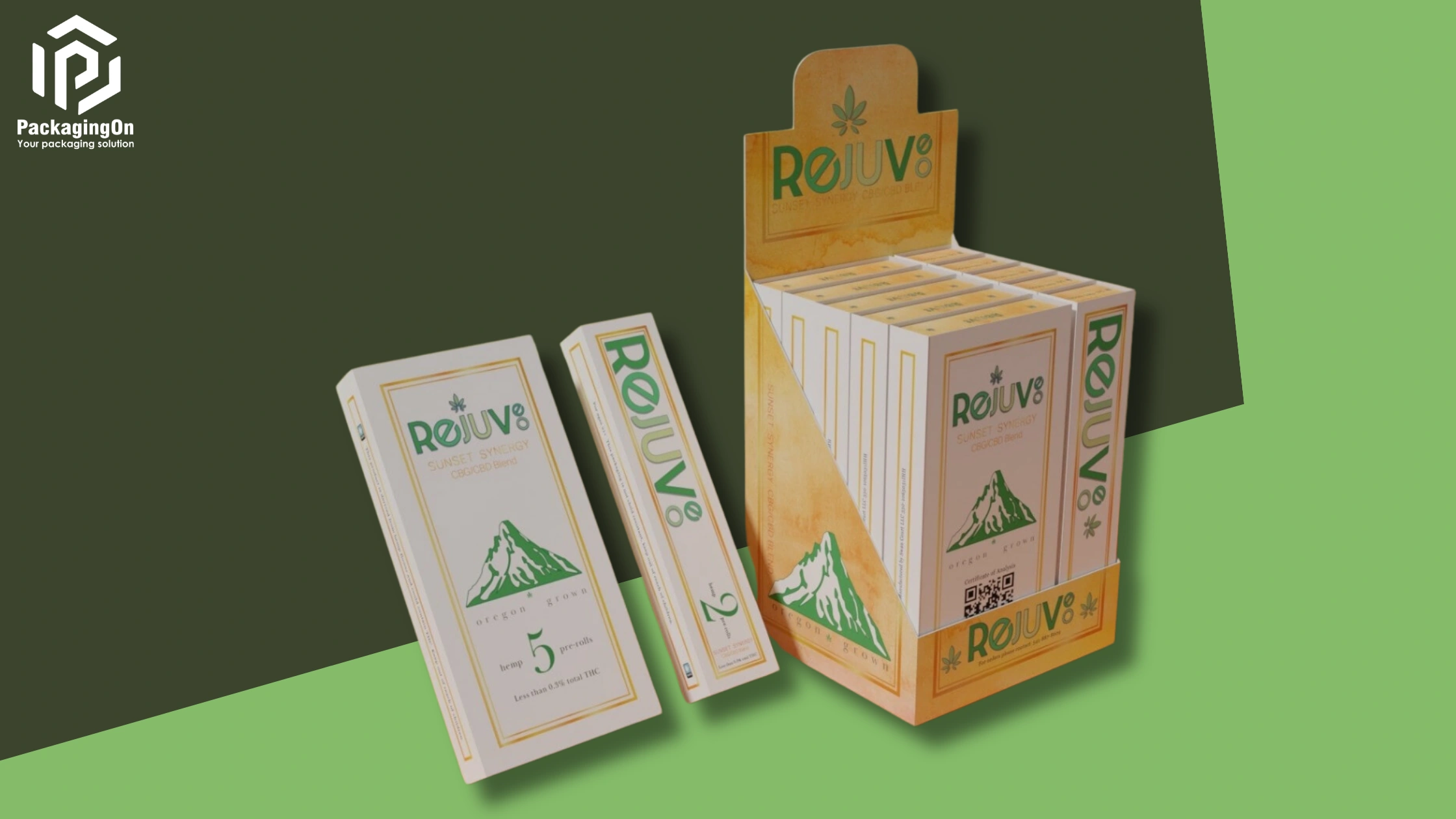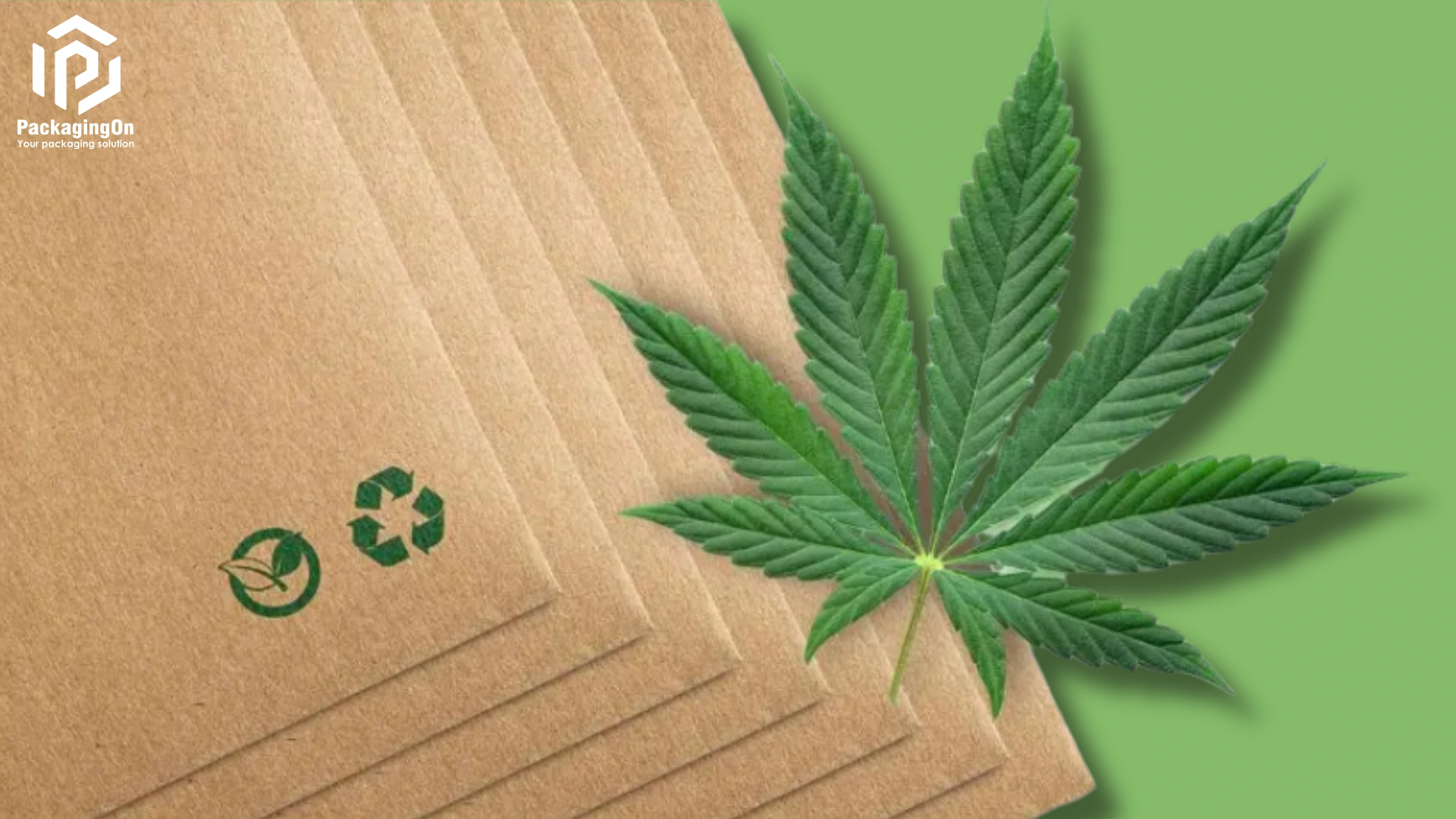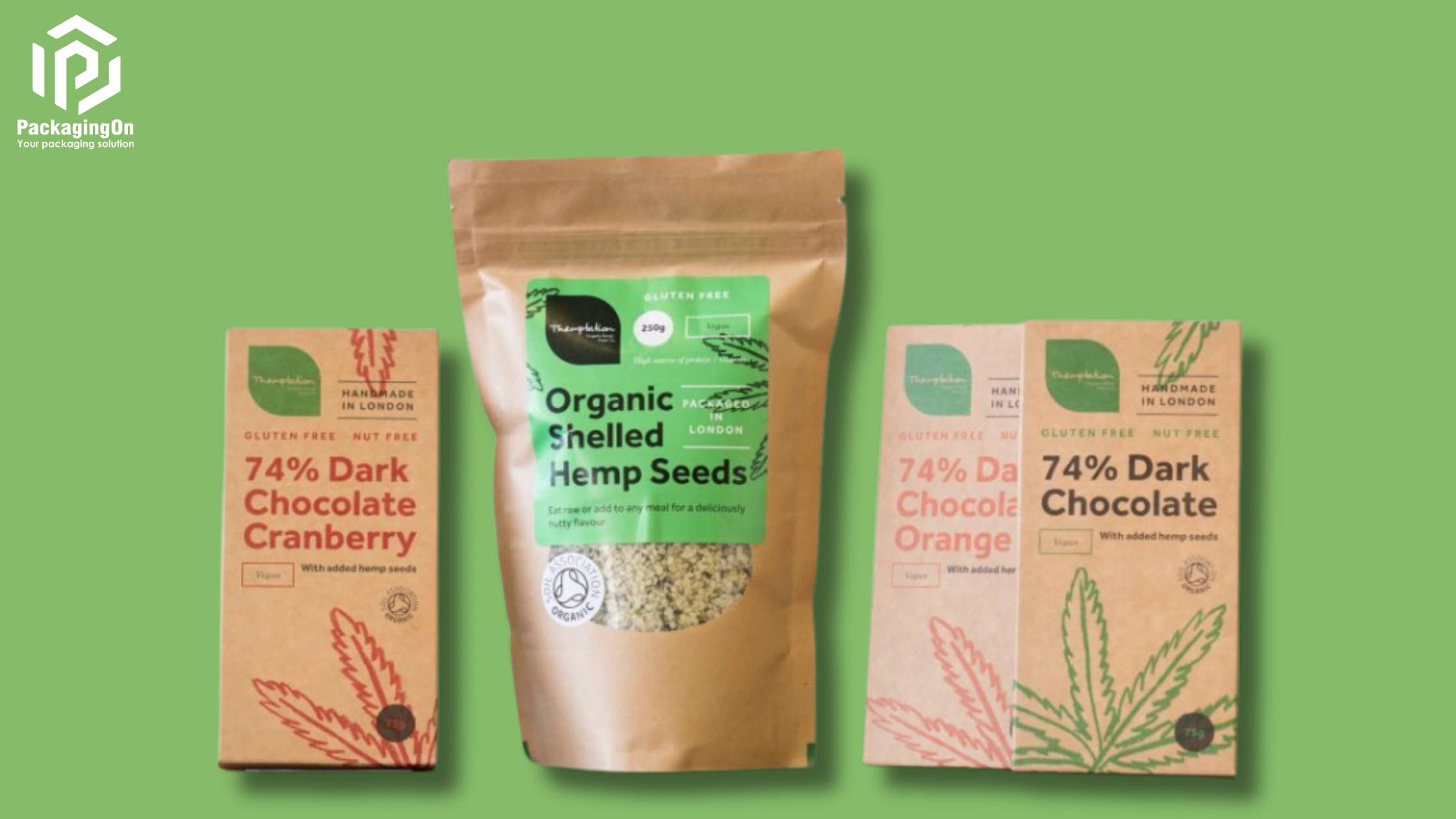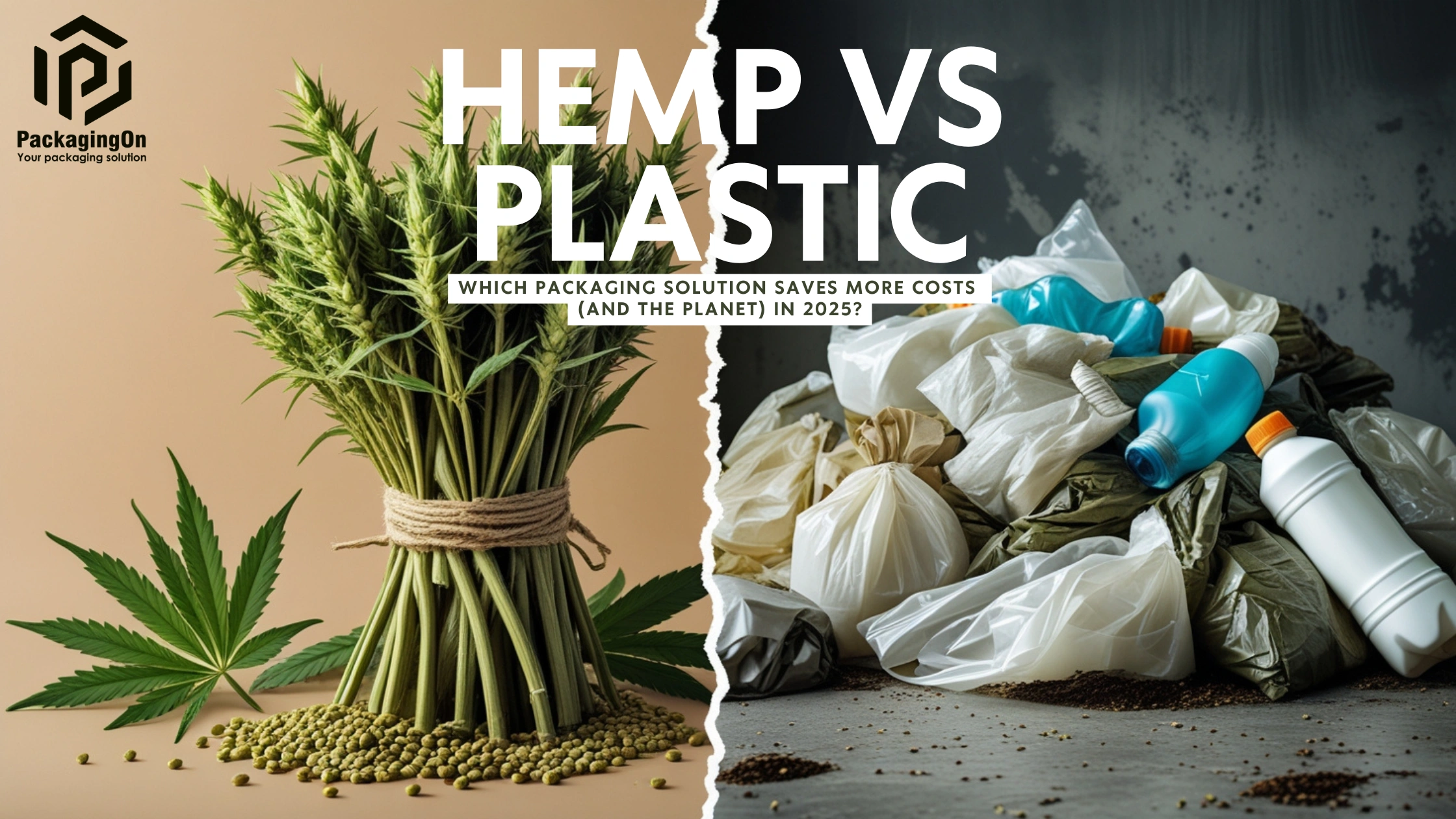Hemp vs. Plastic: Which Packaging Solution Saves More Costs (and the Planet) in 2025?
The first step to finding the solutions for sustainable packaging problems is understanding what the issues are. With the ongoing global warming and the environmental state of our world today, businesses across the world are looking for ways to cut down expenses without harming the planet.
Hemp is one of the semi-precious plants that was considered a niche product in the past along with many others which have polishing opportunities, and the new normal set by the COVID pandemic is thrusting them into the limelight. Considering the cost factors of using these plants in sustainable packaging, it begs the question – how do these two compare? Let’s start by looking at the duel of hemp vs plastic, unveil what’s defined from this quickly evolving market and take a look at the balance between the ever brittle budget and earth’s wellbeing.
Hemp packaging is gaining a lot of attention in recent years, especially after the COVID pandemic, and is popular for a reason. This plant requires less resources and can survive in almost any climate, so businesses are looking for eco-friendly solutions. Unlike plastic, which comes from fossil fuels, hemp uses far fewer chemicals in the growing process.
Another reason for the increasing popularity for hemp bags and containers is their renewability. These products naturally degrade, making them highly favorable in the battle of waste management.
On top of that, the move toward sustainable practices is appealing to consumers nowadays. Environmentally conscious buyers are now favoring brands that are sustainable.
The emergence of hemp as a packaging material marks a significant shift in consumer attitudes. More companies are starting to recognize the need to incorporate these values into their business practices. As people become more aware of what this material can do, it is evident that hemp is establishing its place in the world of packaging.

Pros and Cons of Hemp Packaging
Hemp packaging is gaining popularity slowly but surely. First of all, it is biodegradable and compostable which means it can decomposed safely without harming the environment. This raises the appeal to eco-friendly consumers.
Its versatility is another benefit. Hemp can be used in the form of bags, boxes, or even wraps, making it useful for different kinds of businesses. Moreover, hemp fibers are strong and durable and often surpass traditional materials such as paper or plastic.
Yes, there are cons too. For example, the production process might be more costly than traditional plastic production. When companies make the switch to hemp, they might be shocked by the initial costs.
There are also availability issues; not all places have good quality hemp materials. These are reasons that could scare businesses thinking of cutting costs or those on a restricted budget while pondering over the hemp vs plastic debate.
The Popularity of Plastics Packaging
Over the years, plastic packaging has taken center stage in almost every household. Its light weight, durability, and ease of molding into many shapes gives it an edge over products like cardboard. It has replaced food containers and wraps, and is now being used in electronics, as well.
One undeniable factor is ease of use. Businesses appreciate the fact that plastic can be molded into whatever shape is required and in bulk, which saves companies time and money. Not to mention, it is very convenient for the consumers to use, since plastic is easy to handle and quite durable.
Still, the overuse and focus solely on plastics does have problems. The negative impact that single-use plastics have on the environment is tremendous, and a major contributor to the pollution and the landfill crisis we are facing today.
There is also the question of how long plastic can still have utility, given the fast paced world and changing environment we live in? Solutions like hemp are starting to gain value, while the focus solely on plastic packaging does need to change.

The Consequences of Plastic Packaging
While the adage says that what seems too good to be true usually is, the lower cost of plastic packaging is not the only concealed concern. The production of plastic packaging requires a massive amount of fossil fuels which further harms the environment.
Numerous plastic products after their short life span finish their use in oceans or landfills. The costs associated with cleaning them up can be very damaging both environmentally and financially. All mental and marine animals face severe suffering as a result of ingestion or even entanglement.
Apart from the environmental impacts, there are serious consequences when it comes to the health of the general population due to plastic poisoning food products and people consuming them. These impacts could be potentially harmful health wise for the public.
In addition to this, when the world moves toward putting greater restrictions on plastic, companies risk incurring additional fines and operational costs. Moving away from established plastic put conventional practices will cost businesses at first, but greatly improve sustainability downstream.
Plastic packaging has a deceptively low price which at first glance seems appealing but when its true financial impacts are revealed becomes highly harmful for businesses which is why the all these factors cannot be ignored.
Eliminating Deficiency and Protecting the Environment
Packaging made out of cannabis floral material or stem is a clear winner for trying to find sustainable resources because it can get processed at a high speed without requiring lots of pesticides, unlike other crops. In comparison, the production of plastic materials requires a lot of energy to be used and released. Not only does this have a large negative impact on the environment in terms of greenhouse gases but also the burning of fossil fuels greatly ebbs the reserves of energy that are already limited.
In addition to this, hemp biodegrades in a matter of months when disposed of properly. Unlike plastics, which can take centuries to break down and prologs pollution that impacts wildlife and ecosystems.
Shifting to hemp can lead to a decrease in the ussage of single-use plastic which can help in building a circular economy. Moreover, businesses that choose to switch to this eco-friendly alternative showcase their commitment to the protection of the planet.
The concern for the environment is not just limited to the type of materials; it affects how people perceive brands, and the loyalty they have to them, especially these days when most people are eco-friendly.
Cost Comparison: Hemp and Plastic Packaging
In regards to cost, hemp packaging is often different compared with traditional methods of plastic packaging. The price of hemp materials is often high due to a low supply chain and low production volumes, however, this is changing rapidly due to the higher focus on sustainability.
It’s well known that plastic packaging is cheaper to purchase compared to other options. This is due to the low cost of mass production processes which fail to take into account the cost of environmental damage.
After some time, companies are likely to realize that the savings enjoyed from lesser waste disposal and recycling efforts will outweigh the higher upfront cost of hemp materials. As more regulations are placed against single-use plastics, companies are likely to incur more expenses while being compliant.
Furthermore, consumer tastes are now leaning towards products that promote conservation. This shift in favor of “going green” may create new market opportunities for brands that already utilize hemp solutions.
Understanding these considerations is important in balancing profit with ethical concerns over the long haul.

The Future Are We Looking At 2025 And Beyond
With 2025 drawing closer, the discussions around this topic are changing quickly. People are more conscious about sustainability than ever. Businesses have started adopting eco-friendly solutions more than ever before.
The world is now accepting hemp packaging as a serious alternative. New methods in processing and industrial production have opened doors for better access to hemp. Businesses that make the leap could potentially be the ones who cut through the noise in the marketplace.
But plastic is still king. Its durability and low cost still appeal to many businesses. The problem will be how to accommodate these in light of increasing environmental concerns.
Changes in law can also tilt the balance when it comes to choices in packaging materials. Countries are starting to enforce stricter laws on plastic that will push brands to rethink their policies.
The future is promising, by 2025 the new era of blends could utterly change the practices of packaging introducing a novel approach of using plastic along with eco-friendly hemp and even bioplastics, resulting in amazing benefits for both consumers and producers.
Making a Choice: Which Is More Constructive For Your Business?
In the realm of business, hemp and plastic choices reverberate the most as companies seek packaging solutions. Each option has pros and cons that will affect not just your profit margins but also the sustainability goals of your brand.
Hemp vs. Plastic packaging makes the most sense to those who are willing to go sustainable. It comes from a renewable source, is bio-degradable, and certainly less pollutive than standard plastics. More importantly, with awareness around sustainable practices growing, brands using hemp can definitely improve their market presence.
Still, plastic is at the top because of its cheapness and flexibility. Even so, the undisclosed costs that come with using plastic to the environment cannot be ignored any longer. From covering the costs of pollution to the negative sentiment from consumers regarding efforts towards sustainability, these factors will impact profitability in the long run.
When you think about hemp bags versus plastic bags, or the all-encompassing discussion of hemp vs plastic, the most important aspect is your target audience. Are they eco-friendly? Are they willing to pay more for products that are produced sustainably?
The correct answer will depend on several factors, including any financial limitations, desired market placement, and overall responsibility on sustainability. Things will probably change dramatically by 2025, so making smart decisions today will enable your business the best position. That way, you will be able to align your business with upcoming cost effectiveness and ecologically responsible practices.

